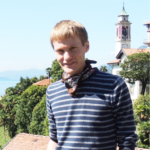About
Abstract:
Cell-to-cell heterogeneity in gene expression has broad-ranging effects: It can elevate antibiotic resistance in one microbe while other cells remain susceptible. It can also decrease yields of a biosynthetic product in a subpopulation of cells. In this talk, I will discuss approaches for quantifying, controlling, and ultimately understanding the impact of cell-to-cell variability. I will describe experiments using single-cell time-lapse microscopy to measure gene expression and growth in bacteria, focusing on genes related to antibiotic resistance and stress response. In support of this, I will discuss our recent advances in automated image processing of time-lapse microscopy images using deep learning models (DeLTA). Once trained, the DeLTA algorithm requires minimal input from the user and can rapidly segment, track, and reconstruct lineages for bacteria growing in microfluidic chips and on two dimensional surfaces. I will also discuss optogenetic control methods that allow us to use light-based feedback to regulate gene expression in real time. Using a combination of deep learning-based models and rapid image analysis, we can simultaneously control gene expression in thousands of cells in parallel. Together, these approaches offer powerful strategies that can be used to quantify and control cell-to-cell heterogeneity.
Location
Room: virtual, via Teams
Address: 28 Rue du Docteur Roux, Paris, France



